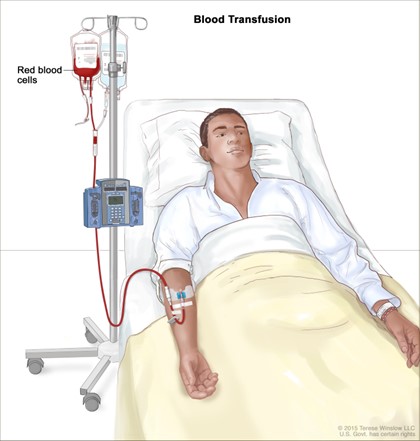A nurse is caring for a client who has just undergone a total laryngectomy.
Which of the following findings is the nurse's priority for immediate intervention?
Fever.
Blood-tinged secretions.
Tachypnea.
IV infiltration.
The Correct Answer is C
The nurse’s priority for immediate intervention is tachypnea, which is rapid breathing.
Tachypnea can be a sign of respiratory distress and requires immediate intervention.
Choice A is wrong because while a fever may indicate an infection, it is not the priority for immediate intervention.
Choice B is wrong because while blood-tinged secretions may indicate bleeding, it is not the priority for immediate intervention.
Choice D is wrong because while IV infiltration may cause discomfort and require attention, it is not the priority for immediate intervention.
Nursing Test Bank
Naxlex Comprehensive Predictor Exams
Related Questions
Correct Answer is D
Explanation
The first action the nurse should take is to collect information about the irritant that caused the injury.
This information is important because it can help determine the appropriate treatment and irrigation solution to use.
Choice A is incorrect because airborne precautions are used to prevent the spread of infectious diseases that are transmitted through the air, and are not necessary in this situation.
Choice B is incorrect because administering proparacaine eye drops into the affected eye is not the first action the nurse should take.
Proparacaine is a topical anesthetic that can be used to numb the eye before performing ocular irrigation, but it is not the first action the nurse should take.
Choice C is incorrect because installing 0.9% sodium chloride solution into the affected eye is not the first action the nurse should take; the nurse should first collect information about the irritant that caused the injury before performing ocular irrigation.
Correct Answer is A
Explanation
The correct answer is A. Back pain.
Choice A reason: Back pain during a blood transfusion is a classic symptom of a hemolytic transfusion reaction. This type of reaction occurs when the immune system attacks the transfused red blood cells, leading to their destruction. Back pain is considered a more specific and early sign of this reaction.
Choice B reason: Bradycardia, which is a slower than normal heart rate, is not typically associated with hemolytic transfusion reactions. The normal range for an adult’s resting heart rate is between 60 to 100 beats per minute. Bradycardia is usually considered when the heart rate is lower than 60 beats per minute in a resting adult. It can be a sign of a well-trained athlete or can occur as a result of certain medications or heart conditions, but it is not a recognized symptom of a hemolytic transfusion reaction.
Choice C reason: Hypertension, or high blood pressure, is also not a common symptom of a hemolytic transfusion reaction. Normal blood pressure ranges from 90/60 mmHg to 120/80 mmHg. Hypertension is typically defined as having a blood pressure higher than 130/80 mmHg. While hypertension can be a serious condition, it is not indicative of a hemolytic transfusion reaction.
Choice D reason: Chills are a symptom that can be associated with a hemolytic transfusion reaction, often occurring alongside fever and back pain. However, while chills can indicate a reaction, back pain is a more specific symptom that can help differentiate a hemolytic reaction from other types of transfusion reactions.

Whether you are a student looking to ace your exams or a practicing nurse seeking to enhance your expertise , our nursing education contents will empower you with the confidence and competence to make a difference in the lives of patients and become a respected leader in the healthcare field.
Visit Naxlex, invest in your future and unlock endless possibilities with our unparalleled nursing education contents today
Report Wrong Answer on the Current Question
Do you disagree with the answer? If yes, what is your expected answer? Explain.
Kindly be descriptive with the issue you are facing.
